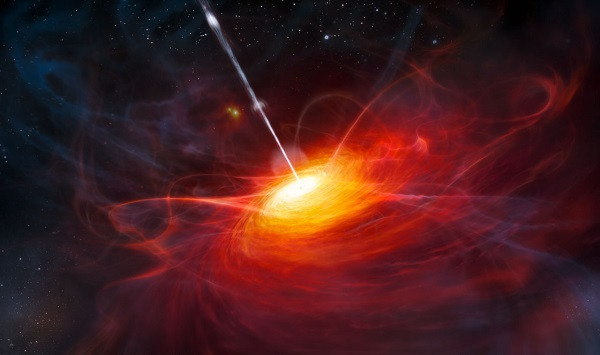Monster black hole 12 billion times the mass of the sun discovered

An "impossibly large" black hole 12 billion times the mass of the Sun and that powered one of the brightest objects in the early universe has been discovered.
An international team of astronomers spotted the giant black hole at the centre of a quasar that pumps out a million billion times the energy of our Sun.
A quasar is an extremely bright cloud of material that is in the process of being sucked into a black hole. As the material speeds towards the black hole, it heats up and creates an extraordinary amount of light.
This process is known as radiation pressure and was thought to limit the growth rate of black holes – so the size of the monster black hole surprised scientists.
The quasar discovered is the brightest ever found in the early universe and is powered by the black hole. Named SDSS J0100+2802, the quasar has a luminosity of 420 trillion that of our Sun – seven times brighter than the most distant quasar known.

It sits 12.8 billion light years away and was formed 900 million years after the Big Bang.
"This quasar is very unique. Just like the brightest lighthouse in the distant universe, its glowing light will help us to probe more about the early universe," team-leader Xue-Bing Wu from Peking University explained.
Their findings have also thrown up questions about how black holes form and grew early on in the history of the universe.
Fuyan Bian, from the Research School of Astronomy and Astrophysics at the Australian National University (ANU), said: "Forming such a large black hole so quickly is hard to interpret with current theories. This black hole at the centre of the quasar gained enormous mass in a short period of time."
Yuri Beletsky, from the Carnegie Institute, added: "This quasar is a unique laboratory to study the way that a quasar's black hole and host galaxy co-evolve.
"Our findings indicate that in the early Universe, quasar black holes probably grew faster than their host galaxies, although more research is needed to confirm this idea."
The study is published in the journal Nature.
© Copyright IBTimes 2025. All rights reserved.






















